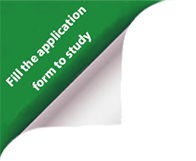Imagine sitting at a picnic in nice weather in a spacious meadow. You are enjoying a beautiful day. When a threat appears. Let's call it a forest ghost. Which way would you run away?
A team of scientists from the Faculty of Forestry and Wood Sciences at the CULS, in cooperation with colleagues from Germany and the USA, tried to answer this question. However, they did not conduct research on humans, but on roe deer. The topic of their study is related to magnetoreception - the orientation of the body according to the Earth's magnetic field. The authors focused on escape behaviour; a phenomenon studied in many countries around the world. Parameters such as the distance at which the animals register the danger and the distance at which they decide to flee are monitored. These reactions are influenced by many factors, from sensory abilities, environmental conditions, to animal experience. However, the effect of the magnetic field has not yet been studied.
According to previous studies, the magnetic field could be a common directional indicator in synchronizing the group's movement and an aid in creating a mental map. Try to remember how you hold the map when you need to orient yourself in the landscape. For the most part, it heads north. (Unless, of course, you're an expert like me - I'm comparing the map to the direction I'm going.)
The hypothesis of this research was that roe deer compares the direction of escape with the north-south compass axis. Data collection was performed using field observations in three localities in the Czech Republic. Experienced biologists and hunters were cast in the role of the forest ghost. When they met the roe deer, they were especially interested in how far they had to approach so that the game would notice them, how close it had already decided to flee, and how far it had come to the nearest shelter. However, the key data were the compass directions to the shelter, the directions of escape and the position of the game. A total of 188 individuals were frightened (individuals appearing alone or those who reacted first in the group were always measured).
And how close did the observers get to the game? On average, the game observed a threat at a distance of 146 m and decided to flee when reaching an average distance of 129 m. The grazing game was most often aligned with the NNE / SSW axis.
If you answered the question in the introduction that you would run away from the ghost or hide in the nearest forest or bush, then know that the game also reacted the most often this way. However, the measurement of directions with a compass revealed that roe deer had the greatest tendency to escape along the north-south axis. In other words, in cases where the observer approached from the north or south, the game fled in the opposite direction, i.e. south or north. And here it starts to get interesting. If the observer came from an eastern or western direction, the game again preferred to escape to the north or south.
So, what does that mean? Roe deer have been confirmed to have magnetoreception capabilities. They use it to orient their position during grazing. The orientation coincides with the most frequently chosen direction when fleeing from danger. Such behaviour greatly helps in group coordination and maintaining the same direction of escape and cohesion. Escape in a familiar direction facilitates spatial orientation and thus a later return to the place of interest. This could be important, for example, for lactating doe, which hides fawns in tall grass and grain.
Obleser, P., Hart, V., Malkemper, E. P., Begall. S., Holá, M., Painter, M. S., Červený, J., Burda, H. (2016). Compass-controlled escape behaviour in roe deer. Behavioural Ecology and Sociobiology. 70, 1345–1355.
Ing. Petr Obleser
He graduated in Forest Engineering and is currently a doctoral student at the Department of Game Management and Wildlife Biology, Faculty of Forestry and Wood sciences, CULS. In his diploma thesis he dealt with the quality of roe deer in hunting grounds with different breeding approaches.
Prepared by: Lucie Hambálková

